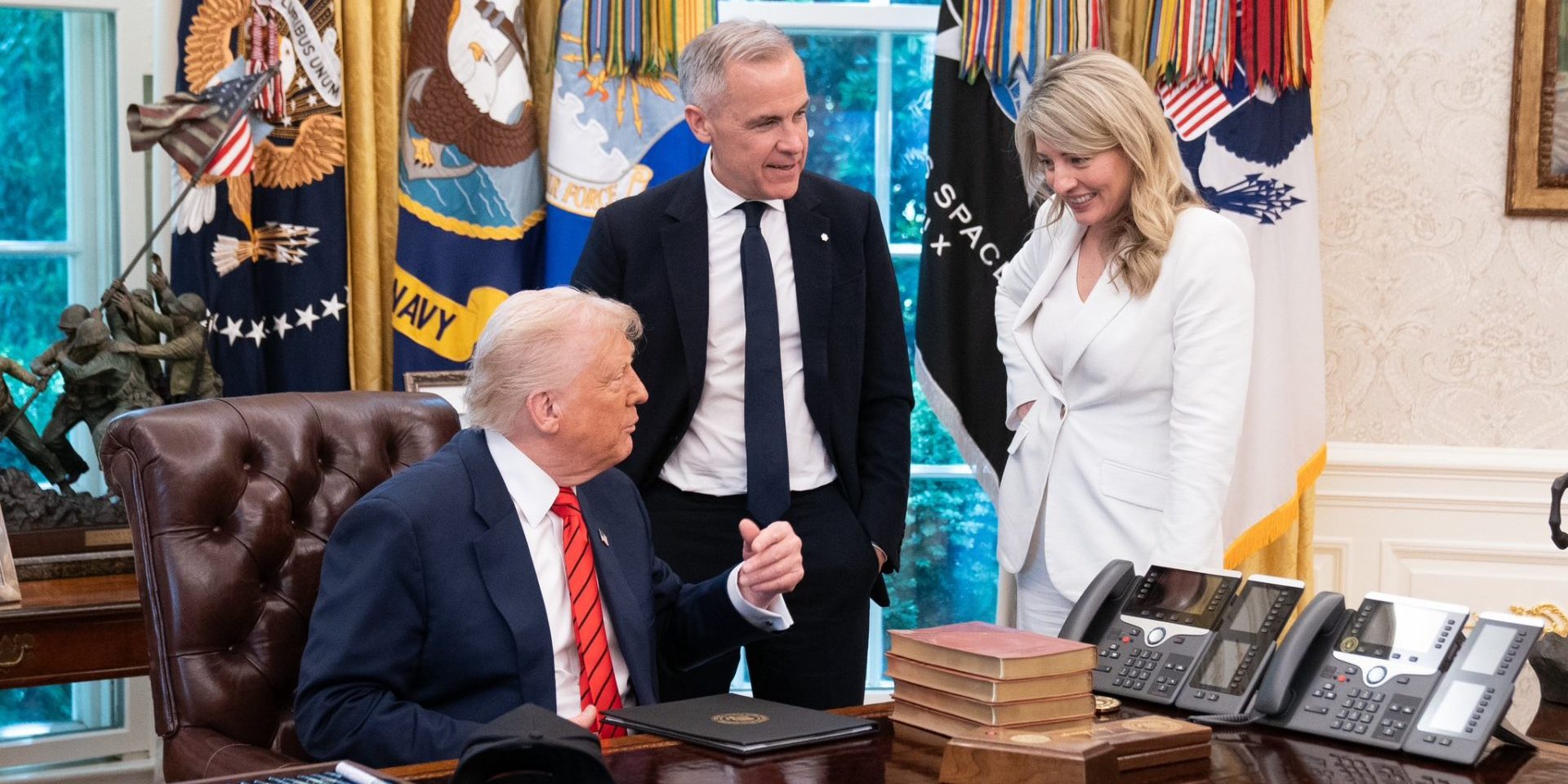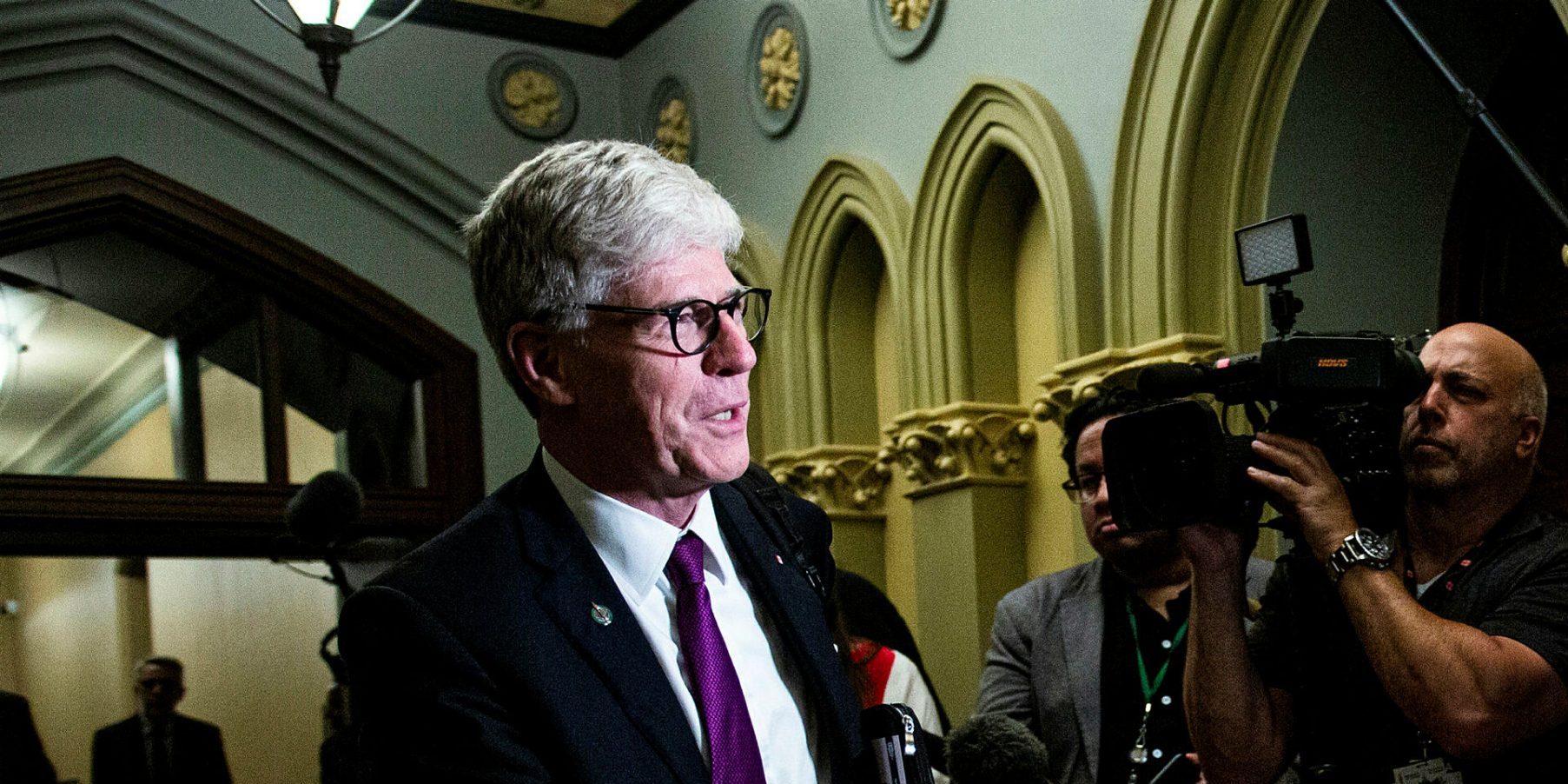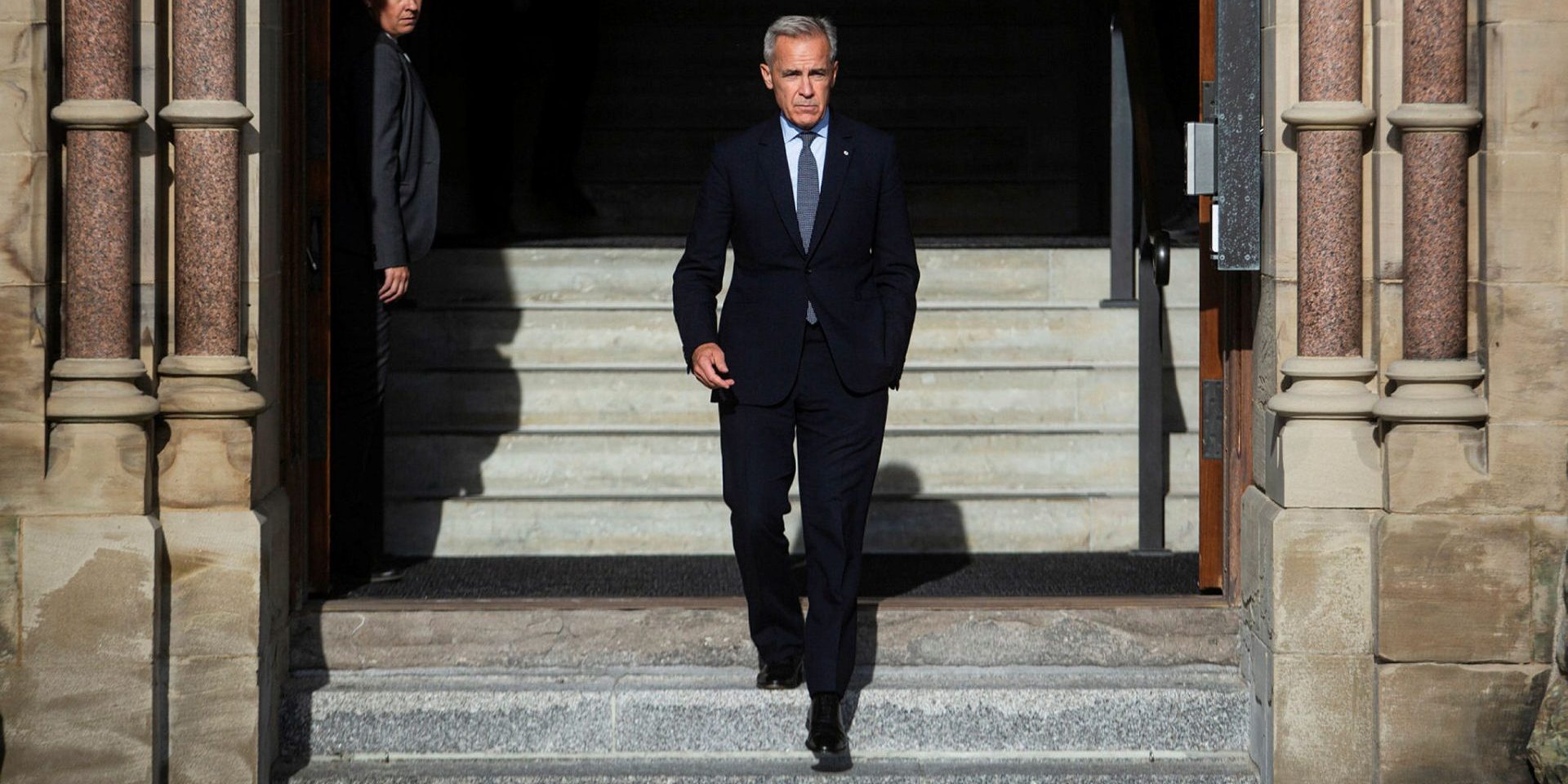What will kill the electric car this time: Trump or Canada’s haplessness?

It appears we have elected a federal government that is not only eager to support a new oil pipeline in British Columbia, but may end up throwing our electric vehicle ambitions into reverse—if not into the ditch.
This could be hasty and unduly negative, but Prime Minister Mark Carney has so far shown far less interest in the clean technologies of the future than in roads, railways, ports and pipelines for his “major infrastructure” projects.
The most optimistic speculation is that his government will extend deadlines for EV adoption by a few years in response to pressure from the Canadian auto sector. Automakers argue, reasonably, that the Justin Trudeau-era decree—that 20 per cent of new cars sold in Canada must be zero-emissions by 2026—is undoable for a variety of reasons, with one of them being the Trump administration’s sharp turn away from electrification and back to gas-powered behemoths.
As to 100 per cent of new cars being electric by 2035, which was the final phase in the Trudeau plan, that now seems ridiculously ambitious barring massive federal intervention. In April, for instance, only 7.5 per cent of new car sales in Canada were EVs and that is down significantly from their 13.8-per-cent share in 2024.
The environmental group, Clean Energy Canada, recently argued that if the government does revisit the near-term targets, it should use the delay to help North American carmakers develop more affordable EVs and to build out the charging network.
This would remove two main obstacles to a transportation transition: the higher cost of EVs, as compared to gas-powered cars, and range anxiety.
The government might also re-think its incentive program. Environment Minister Julie Dabrusin has promised to restore consumer incentives to buy zero-emissions vehicles (without saying when) and the pledge was mentioned, glancingly, in Carney’s election platform. The previous Trudeau rebates—$5,000 on the purchase of a new, non-luxury EV—ended in January when the program ran out of money (because it was so popular).
Since then there has been a lot of foot-shuffling, and throat clearing, from Liberals, mounting derision about EVs from Conservative Leader Pierre Poilievre (of course), and, in the meantime, sales of new EVs have stalled. Unsurprising. Why buy now if there are new incentives on the way? And given Donald Trump’s decision to kill the U.S. rebate worth $7,500, and his general hostility to EVs—never mind his complicated relationship with Elon Musk—how sound is the zero-emissions sector, overall?
In China, it is very sound. One of a number of Chinese companies, BYD (Build Your Dreams) sold more than 4 million clean vehicles in 2024. It also markets a plug-in hybrid for $11,000, along with other affordable models, and has recently become the top-selling global EV brand, edging out Tesla.
Car industry watchers say the quality of these cars is vastly improved and Chinese auto-makers are constantly innovating, with five-minute battery recharging on the immediate horizon.
Through massive government support, long-term planning, technological innovation and vertical integration—asChinese car companies make their own components and have exclusive access to critical minerals for batteries from around the world—China now dominates the next stage in car-making.
The problem in North American is that EVs still cost too much compared to a frisky little gas-powered car, for example.
Nor have North American governments—including those for Ontario and Canada, which invested heavily in southern-Ontario EV battery plants—been quick enough to build charging capacity in multi-family units, condos, remote communities and even on major highway corridors.
A 2024 federal report says 40,000 charging stations must be installed every year between now and 2040 to meet the moment. The last several years have only produced 37,000 and they aren’t universally reliable.
Meanwhile, an astonishing 97 per cent of new cars sold in Norway in June were electric. The Nordic country is often cited as a model for other cold places, like Canada. If Norway—which also has significant oil and gas wealth—can convert an entire population to zero-emission cars, why can’t we?
Norway’s revolution, like China’s, did not happen overnight. It was the product of consistent support over decades, from governments of all stripes, in the form of tax exemptions that made EVs as affordable as conventional cars.
The country also built out an impressive charging network so that home chargers are commonplace.
These were expensive undertakings but they have been bankrolled by the country’s Sovereign Wealth Fund, which redirects taxes on oil and gas profits into future needs and developments, including the transition to clean transportation.
Canada has no such motherlode and it is hard to imagine provinces like Alberta willingly sharing a portion of its oil revenues with a national fund. Instead, a couple of provinces—Alberta, Quebec, and Newfoundland and Labrador—have their own wealth funds, but they are tiny.
That said, comparisons with Norway are inexact. It does not have a powerful domestic car industry—with all the jobs, wealth and political power of the North American sector—to protect. It is also a smaller country than Canada, and very wealthy, with only 5.5 million inhabitants.
The faster way to accelerate EV sales in Canada would be to remove, or lower, the 100-per-cent tariff on Chinese EVs, or, as Clean Energy Canada suggests, on a limited number of them. That could provide affordable vehicles for middle-class buyers and, potentially, spur the North American industry to pick up its pace and compete on price.
The arrival of smaller, fuel-efficient Japanese cars on this continent in the 1970s didn’t destroy the domestic car industry. It forced it to innovate.
If we did such a thing, of course, Trump’s head would explode, given his current hostility to China. The powerful autoworkers union would be none too pleased either. Indeed, it was to curry their favour that former president Joe Biden originally imposed the 100-per-cent barrier, and our government quickly followed.
But Trump, who in April imposed 25-per-cent tariffs on cars made here, is the immediate threat to Canada’s industry, not China. The tariffs, still being “negotiated,” have already led to layoffs and slowdowns on this side of the border.
That’s what “integration” does. Until further notice, we are passengers in this environmental and economic setback, and Donald Trump is at the wheel.
Susan Riley is a veteran political columnist who writes regularly for the Hill Times.
The Hill Times






 LICENSING
LICENSING PODCAST
PODCAST ALERTS
ALERTS


